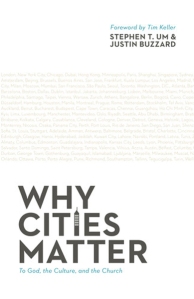PUBLIC FINANCE
JAPAN BANKS ON SUCCESS OF ABENOMICS
Joseph Stiglitz | The Guardian
There is every reason to believe that Japan’s strategy for rejuvenating its economy will succeed: the country benefits from strong institutions, has a well-educated labour force with superb technical skills and design sensibilities, and is located in the world’s most (only?) dynamic region. It suffers from less inequality than many advanced industrial countries (though more than Canada and the northern European countries), and it has had a longer-standing commitment to environment preservation.
If the comprehensive agenda that Abe has laid out is executed well, today’s growing confidence will be vindicated. Indeed, Japan could become one of the few rays of light in an otherwise gloomy advanced-country landscape.
THE ECB, OMT AND MORAL HAZARD
Paul Krugman | The Conscience of a Liberal | The New York Times
Francesco Saraceno marvels at the European Commission’s response to the Portuguese political crisis; the Commission praises the government’s determination to impose austerity no matter what the courts say, because austerity is producing “growing investor confidence in Portugal”. Say what? Well, pretty obviously they’re referring to the narrowing of interest rate spreads.
The point is that this narrowing of spreads has nothing to do with austerity. As Paul De Grauwe points out, the amount by which a country’s interest rate spread against Germany has narrowed is fully explained by how big its spread was at the peak of the crisis — there is essentially no indication that policies mattered at all.
WHY DO PEOPLE HATE DEFICITS?
Dylan Matthews | Wonkblog | The Washington Post
Both President Obama and the Republican leadership in the House pay lip service to wanting to reduce the national debt burden, and almost all their fights to date have centered on how best to do that.
But hold on a second. Why do we hate deficits? “Balancing the budget” sounds really nice, but what reason do we have to believe it’s actually valuable? There are a number of reasons to think it might be good for the debt load to be smaller rather than larger, but almost all of them are controversial among economists, and some more so than others. Here are the common reasons for balancing the budget you hear, and what the evidence says about each.
________________________________
POLITICAL ECONOMY
_________________________________
RADICAL CENTRISM: UNITING THE RADICAL LEFT AND THE RADICAL RIGHT
Ashwin Parameswaran | Macroresilience
Most critics of neoliberalism on the left point to the dramatic reduction in the scale of government activities since the 80s – the privatisation of state-run enterprises, the increased dependence upon private contractors for delivering public services etc. Most right-wing critics lament the increasing regulatory burden faced by businesses and individuals and the preferential treatment and bailouts doled out to the politically well-connected. Neither the left nor the right is wrong. But both of them only see one side of what is the core strategy of neoliberal crony capitalism – increase the scope and reduce the scale of government intervention. Where the government was the sole operator, such as prisons and healthcare, “pragmatic” privatisation leaves us with a mix of heavily regulated oligopolies and risk-free private contracting relationships. On the other hand, where the private sector was allowed to operate without much oversight the “pragmatic” reform involves the subordination of free enterprise to a “sensible” regulatory regime and public-private partnerships to direct capital to social causes. In other words, expand the scope of government to permeate as many economic activities as possible and contract the scale of government within its core activities.
. . . The essence of a radical centrist approach is government provision of essential goods and services and a minimal-intervention, free enterprise environment for everything else. In most countries, this requires both a dramatic increase in the scale of government activities within its core domain as well as a dramatic reduction in the scope of government activities outside it. In criticising the shambolic privatisation of National Rail in the United Kingdom, Christian Wolmar argued that: “once you have government involvement, you might as well have government ownership”. This is an understatement. The essence of radical centrism is: ‘once you have government involvement, you must have government ownership’. Moving from publicly run systems “towards” free-enterprise systems or vice versa is never a good idea. The road between the public sector and the private sector is the zone of crony capitalist public-private partnerships. We need a narrowly defined ‘pure public option’ rather than the pragmatic crony capitalist ‘private option’.
+++
Bailouts For People, Not Firms
Radical centrism involves a strengthening of the safety net for individuals combined with a dramatic increase in the competitive pressures exerted on incumbent firms. Today, we bail out banks because a banking collapse threatens the integrity of the financial system. We bail out incumbent firms because firm failure leaves the unemployed without even catastrophic health insurance. The principle of radical centrism aims to build a firewall that protects the common man from the worst impact of economic disturbances while simultaneously increasing the threat of failure at firm level. The presence of the ‘public option’ and a robust safety net is precisely what empowers us to allow incumbent firms to fail.
_________________________________
ECONOMICS | MARGARET THATCHER
_________________________________
A LOOK BACK AT MARGARET THATCHER’S ECONOMIC RECORD
Dylan Matthews | Wonkblog | The Washigton Post
Her record usually is summarized as heavy on union-busting, spending cuts, privatization and deregulation, undoing as much as she could of the social welfare state that Asquith and Attlee built. That’s basically accurate, but it’s worth delving deeper into what her specific policy program entailed.
It makes sense to start with what the British economy looked like in 1979, when Thatcher took office. Like the U.S. at the time, Britain was experiencing quite high inflation. Under the second premiership of Harold Wilson, between 1974 and 1976, inflation peaked at above 26 percent, and while his successor James Callaghan never let it get much above 15 percent, it was hovering around 10 when Thatcher took office
_________________________________
URBANISM
_________________________________
WHY CITIES MATTER
Aaron M. Renn | The Urbanophile
 One thing that really caught my eye was when they tackled the matter of why some cities fail. They seem to anticipate the objection that if cities are so great, why are so many of them like Detroit so screwed up? The answer they give is diversity – in the broadest sense of the word. Detroit is very racially diverse, but lacked economic diversity. As they put it:
One thing that really caught my eye was when they tackled the matter of why some cities fail. They seem to anticipate the objection that if cities are so great, why are so many of them like Detroit so screwed up? The answer they give is diversity – in the broadest sense of the word. Detroit is very racially diverse, but lacked economic diversity. As they put it:
The one phenomenon guaranteed to stifle the power of density is homogeneity. In other words, if everyone in a city does the same thing for work, thinks along the same lines, and lives relatively similar lives, no matter how densely clustered they may be, that city will lack the necessary innovation capital needed to sustain itself over the long haul.
Or as they put it in a way I’d never read elsewhere:
Density + Diversity = Multiplication
Density – Diversity = Addition
LAWLESS METROPOLIS: WALLED CITY THEN AND NOW
Steph | Web Urbanist
Twenty years ago, a dank, lawless, congested and compacted lawless city located just outside Hong Kong was evacuated and destroyed, putting an end to the nearly century-old settlement first created as a Chinese military fort. Kowloon Walled City was packed with at least 50,000 inhabitants in 6.5 acres just before its demolition in 1993, and its history included a period of mob rule with sky-high rates of prostitution, gambling and drug use. Today, it’s the Kowloon Walled City Park, a tranquil place modeled on traditional gardens of the early Qing dynasty.
_________________________________
PHOTOGRAPHY
_________________________________
SHOOTING WEDDINGS, FOR BETTER OR FOR WORSE
Matt McCain | The Lens | The New York Times
Bill McCullough played pedal steel guitar for Knife in the Water, an Austin, Tex., band whose sound was “the perfect soundtrack for downing a fifth of bourbon alone in your car, parked outside your ex’s house in the dead of winter.” Unfortunately, he wasn’t much of a drinker. So, while his bandmates hit the bar after the sound check, he would wander, taking pictures with a camera he brought with him on the road. Working nooks and crannies and finding odd angles, he rediscovered his love of photography.
Good thing, too, since he lost some of his hearing in the ensuing years. Out of necessity, he started photographing weddings, where his penchant for finding giddy moments of humor and rendering them in lavish color and from unlikely vantage points proved popular. In some ways, he found that his approaches to music and to photography were almost identical.

_________________________________
MICROBIOTA
_________________________________
BUGS AS DRUGS
Carl Zimmer | Phenomena | National Geographic
According to Nature Biotechnology, however, we’re getting there. The current issue has a special focus on the microbiome (behind a paywall, alas). As reporter Charles Schmidt notes in an article for the journal, biotech startups are setting out on the drug-approval road in order to prove that some bacteria are indeed safe and effective. Enterologics in Minnesota is testing out a strain of E. coli as a treatment for a type of gut inflammation called pouchitis. Bernat Olle, the co-founder of Vedanta Biosciences in Boston, also contributes an essay to Nature Biotechnology, in which he mentions that his company is testing out a cocktail of species that can restore gut ecosystems degraded by diseases.
All well and good, but the fact is that the bacteria that these companies are studying have been known for a long time. That’s because they were comfortable enough in laboratories to thrive. Most microbes in our bodies require much more exotic conditions. As a result, scientists are just starting to discover them by fishing out their DNA from our bodies. Some companies are trying to mine this newly discovered diversity for keystone species that could have important effects on our health. These new species could also serve as diagnostic tests for diseases. Certain microbes in the mouth are associated with a risk of heart disease, for example. Frederik Bäckhed of the University of Gothenburg in Sweden and his colleagues have patented a way to assess that risk by examining the bacteria in your spit.
GUT REACTIONS
Virginia Hughes | Phenomena | National Geographic
The cell walls of gram-negative bacteria hold a molecule called lipopolysaccharide. More commonly known as endotoxin, the molecule triggers the human immune system and can be extremely dangerous in large quantities. “When people have very bad infections, they can get very high levels of endotoxin in their blood and get sepsis or die,” says Richard Hodin, a professor of surgery at Harvard.
Even low levels of endotoxin can be harmful. In 2007, a study led by Rémy Burcelin at INSERM in Toulouse, France, showed that when mice eat a high-fat diet, it (somehow) increases the amount of endotoxin in their gut. Burcelin’s experiments also suggested that endotoxin causes intestinal inflammation, which in turn makes the gut more permeable, allowing endotoxin to leak into the blood supply and further aggravate the immune system. Over time, mice carrying excess endotoxin develop chronic inflammation, insulin resistance and obesity — all features of metabolic syndrome, which affects more than 20 percent of people in the U.S. and ups the risk of heart disease, stroke and diabetes.
CULPRIT IN HEART DISEASE GOES BEYOND MEAT’S FAT
Gina Kolata | The New York Times
The researchers had come to believe that what damaged hearts was not just the thick edge of fat on steaks, or the delectable marbling of their tender interiors. In fact, these scientists suspected that saturated fat and cholesterol made only a minor contribution to the increased amount of heart disease seen in red-meat eaters. The real culprit, they proposed, was a little-studied chemical that is burped out by bacteria in the intestines after people eat red meat. It is quickly converted by the liver into yet another little-studied chemical called TMAO that gets into the blood and increases the risk of heart disease.
That, at least, was the theory. So the question that morning was: Would a burst of TMAO show up in people’s blood after they ate steak? And would the same thing happen to a vegan who had not eaten meat for at least a year and who consumed the same meal?
The answers were: yes, there was a TMAO burst in the five meat eaters; and no, the vegan did not have it. And TMAO levels turned out to predict heart attack risk in humans, the researchers found. The researchers also found that TMAO actually caused heart disease in mice. Additional studies with 23 vegetarians and vegans and 51 meat eaters showed that meat eaters normally had more TMAO in their blood and that they, unlike those who spurned meat, readily made TMAO after swallowing pills with carnitine.
“It’s really a beautiful combination of mouse studies and human studies to tell a story I find quite plausible,” said Dr. Daniel J. Rader, a heart disease researcher at the University of Pennsylvania School of Medicine, who was not involved in the research.
_________________________________
PROFILE | DOCUMENTARY
_________________________________
THE METALSMITH
Dan McComb | Vimeo
Facing blindness, metalsmith Andy Cooperman renews his commitment to making things worth seeing.
View Andy’s work at andycooperman.com
Music: Reflux by In The Nursery (licensed via Vimeo)
Produced by Visual Contact visualcontact.com
_________________________________
PHYSICS
_________________________________
A HUNT FOR DARK MATTER IN A FORMER GOLD MINE
Khan | The Los Angeles Times
Xenon is costly, but the scientists say it’s worth the roughly $1,000-per-kilogram price tag. Like a field full of brawny defensive linemen standing shoulder to shoulder, the massive atoms in the dense liquid block out unwanted particles — and raise the odds of trapping a slippery dark matter particle trying to squeeze by.
These players are also self-disciplined. Xenon is so chemically inert that electron signals from any collisions can pass freely through the liquid. These crucial signals let scientists eliminate phony dark matter candidates.
_________________________________
INFORMATION WANTS TO BE FREE
_________________________________
DON’T MAKE WIKIPEDIA ANGRY, YOU WOULDN’T LIKE WIKIPEDIA WHEN IT’S ANGRY
Adam Clark Estes | Vice
The French government isn’t very good at the Internet. Well, maybe not the entire French government but an intelligence agency known as the Direction Centrale du Renseignement Intéieur (Central Directorate of Interior Intelligence) certainly needs work. For the past month or so, the intelligence agency has been dueling with the world’s top Wikipedians over a seemingly benign article that it wanted removed from “the free encyclopedia.” As that tagline suggests, Wikipedia does not like it when governments try to censor what it does. Suffice it to say, the situation is working out too well for the French intelligence agency. That article is now the most read piece of content on the French-language Wikipedia.
_________________________________
ART
_________________________________
FRUIT OF A TROUBLED MIND
Prospero | The Economist
These so-called outsider artists have all been diagnosed with cognitive, behavioural and developmental disorders. They live in, or attend, specialist care facilities where they work with art facilitators. The 300 works on display contain their dreams, phobias and projections, but also their idiosyncratic interpretations of the world around them and the important people in their lives. Like much of the Wellcome Collection’s distinctive programming (it has held recent exhibitions on death, dirt and brains) it is unconventional, yet stimulating and significant.
Takako Shibata’s 12 graphic drawings, which show her mother’s face getting bigger as her body gradually disappears, speak volumes about the effect her absence has had on Ms Shibata’s life. Masao Obata’s red-crayon creations on pieces of cardboard depict wedding-like scenes of couples (pictured below), betraying his lifelong yearning for a significant other. A video shot before he died poignantly shows his wish fulfilment: dressed in red tracksuit trousers, a tucked-in red top and a chunky red belt (red is clearly his signature colour) he energetically colours in a couple portrait. He seems sweet and lonely yet focused. “When are you happiest?” the interviewer asks him. “When I’m working,” he says without averting his gaze from his drawing.
_________________________________
CLIMATE CHANGE
_________________________________
HOW THATCHER MADE THE CONSERVATIVE CASE FOR CLIMATE ACTION
James West | Grist
The year: 1990. The venue: Palais des Nations, Geneva. The star: Margaret Thatcher, conservative icon in the final month of her prime ministership. The topic: global warming.
Thatcher went to the Second World Climate Conference to heap praise on the then-infant Intergovernmental Panel on Climate Change, and to sound, again, the alarm over global warming. Not only that, her speech laid out a simple conservative argument for taking environmental action: “It may be cheaper or more cost-effective to take action now,” she said, “than to wait and find we have to pay much more later.” Global warming was, she argued, “real enough for us to make changes and sacrifices, so that we do not live at the expense of future generations.”
_________________________________
FILM | THATCHERISM
_________________________________
SAMMY AND ROSIE GET LAID
Director: Stephen Frears | Screenplay: Hanif Kureshi.
_________________________________
MUSIC
_________________________________
OWINY SIGOMA BAND: POWER PUNCH
Neil Spencer | The Guardian
The Euro-African import-export trade continues in full swing. This London-Nairobi troupe were spawned in Kenya when five young Brits met Joseph Nyamungu, a master of the eight-stringed African lyre. Their debut brought deft techno touches to Kenya’s nyatiti tradition, while this follow-up, for which Joseph and friends came to London, deepens the alchemy. Electro-beats spar with booming congas, guitars chatter with the nyatiti and rich African vocals contrast with the band’s harmonies. Norbat Okelo is spare and spooky, Owiny Techno is Afro-psychedelia and Harpoon Land groove-heavy pop for Stone Rose fans who want to move on. Ingenious.


